What’s Up Video: July 2019 Skywatching Tips from NASA
| Credit | NASA/JPL-Caltech (Presenter: Preston Dyches) |
|---|---|
| Historical Date | July 1, 2019 |
| Language |
|
As NASA marks the 50th anniversary of the Apollo 11 Moon landing, here are five things to know about the Moon that you can share with others:
- How far away is the Moon?
- How big is the Moon?
- What color is the Moon?
- Why do we always see the same side of the Moon?
- And what are the dark areas on the Moon?
Transcript
What's Up for July? NASA is celebrating the 50th anniversary of the Apollo 11 mission making the first human landing on the Moon, while looking forward to the future of lunar exploration. So this month, a special edition of What's Up: Here are five things about the Moon that you can share with others when you're gazing up at our natural satellite.
How far away is the Moon?
The Moon is farther away from Earth than people often think. A good ballpark number to remember is that the Moon is about a quarter of a million miles away, or about 400 thousand kilometers. It's such a big gap that you could just about fit the other seven major planets into the space between the two worlds.
Astronauts from three of the Apollo missions, including Apollo 11, placed special reflectors on the lunar surface that are still used to determine the Moon's distance with extreme precision. In fact, they've revealed that the Moon is moving away from Earth by about an inch and a half per year.
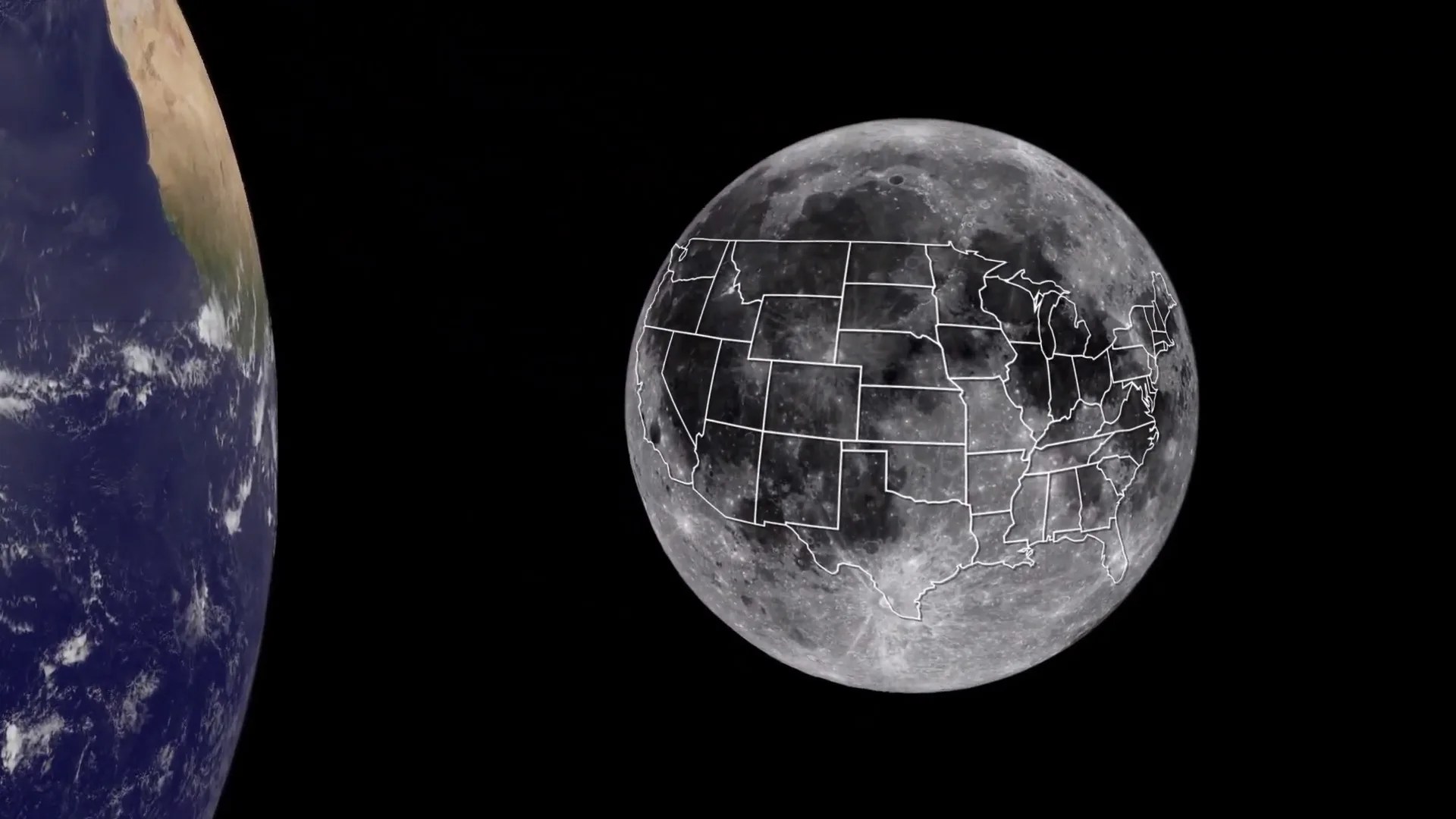
How big is the Moon?
This one's another easy approximation to remember: The Moon is about one-fourth the size of Earth in diameter. It's just about as wide as the United States.
What color is the Moon?
The Moon doesn't emit its own light — it reflects light from the Sun. And up close, the Moon's surface is mostly gray, like old, well-worn asphalt.
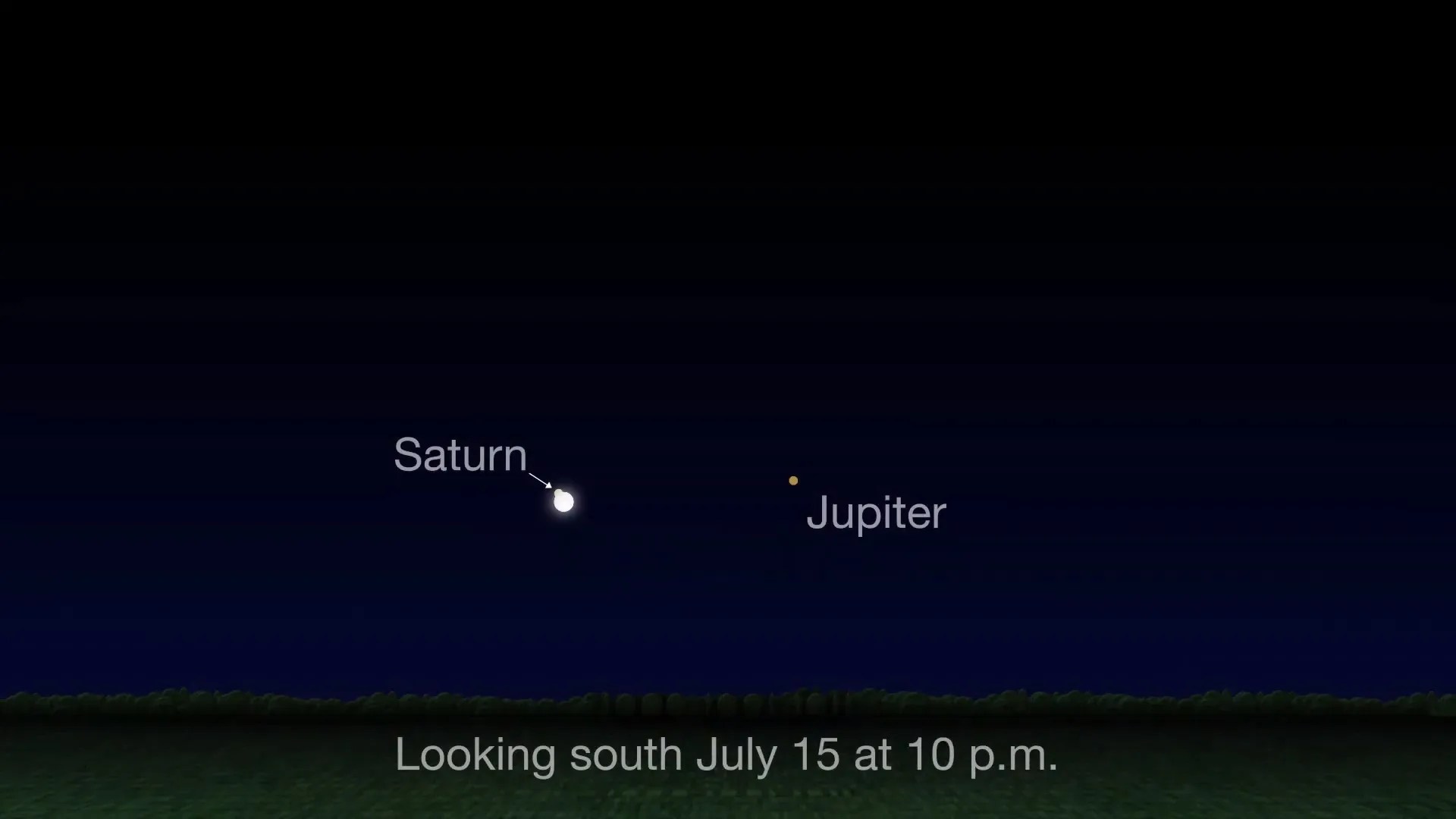
Why do we always see the same side of the Moon?
Now it may not look like it, but the Moon really does rotate on its axis, much like Earth. We always see essentially the same face of the Moon because it orbits around Earth in the same amount of time it takes to rotate. The reason is related to gravity and the same forces that cause daily ocean tides.
A side note is that, since it's rotating, there really is no permanent dark side of the Moon. The changing phases of the Moon demonstrate how the portion of its surface that's lit by the Sun revolves around the Moon every month, over the course of the lunar day.
What are the dark areas on the Moon?
One of the main things you notice when observing the Moon is that it has these bright and dark areas across its surface. (Everybody's familiar with the "Man in the Moon," right?)
The dark areas are known as "mare," the Latin word for seas. The lunar mare are volcanic basins created in the aftermath of ancient impacts billions of years ago. After the impacts, the craters filled with lava, which eventually cooled to form smooth, dark plains.
One of the most famous mare is the Sea of Tranquility. This was the landing site chosen for Apollo 11, in part because it was fairly smooth and level.
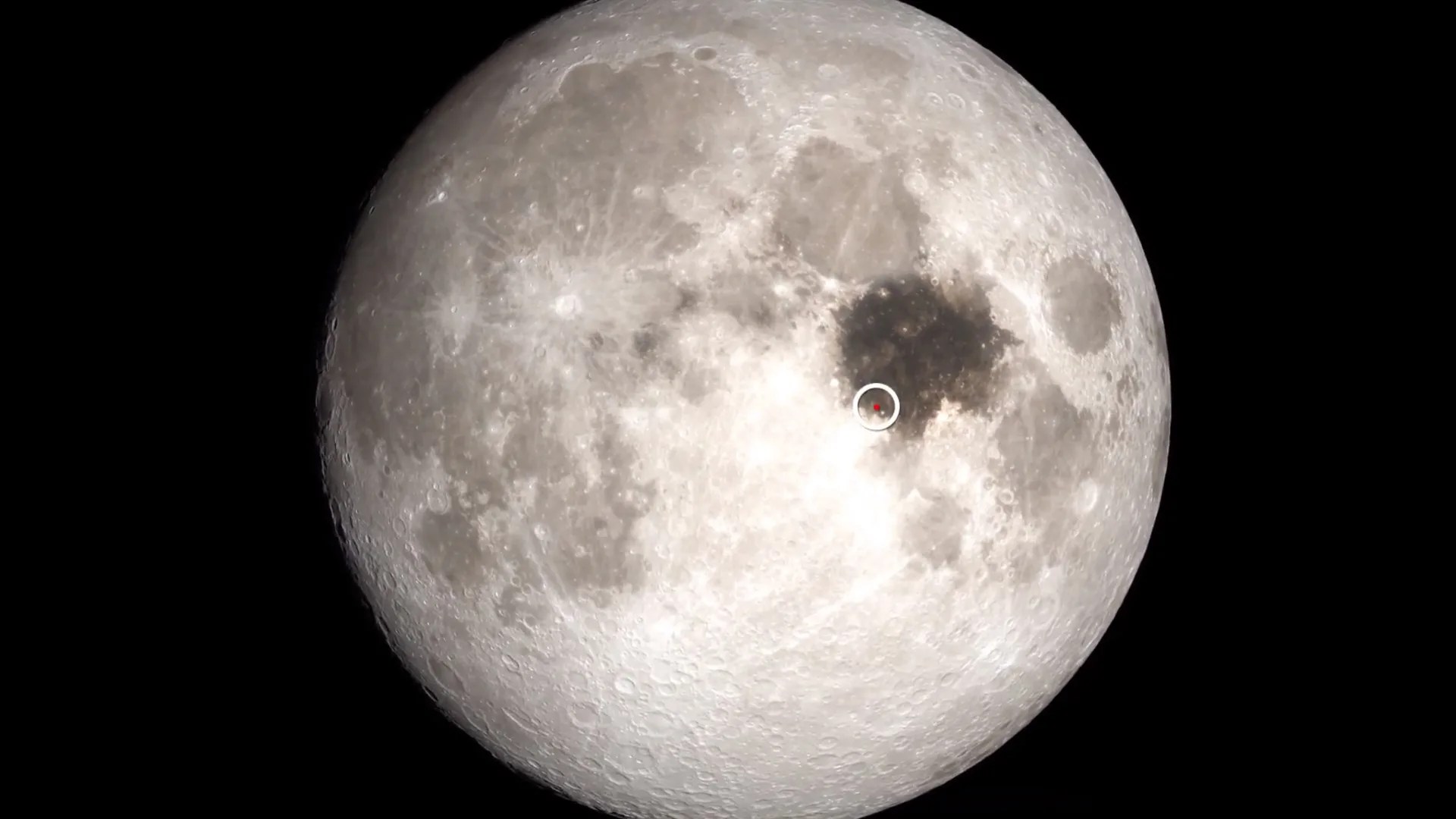
To locate the Sea of Tranquility, look for these two large, dark markings that overlap. If you're facing south, they'll be on the Moon's right side. Tranquility is the lower of the two, and the Apollo 11 landing site is right here.
50 years on, NASA continues to reveal the Moon's secrets, with an eye toward sending the next human astronauts there in the near future.
Here are the phases of the Moon for July.
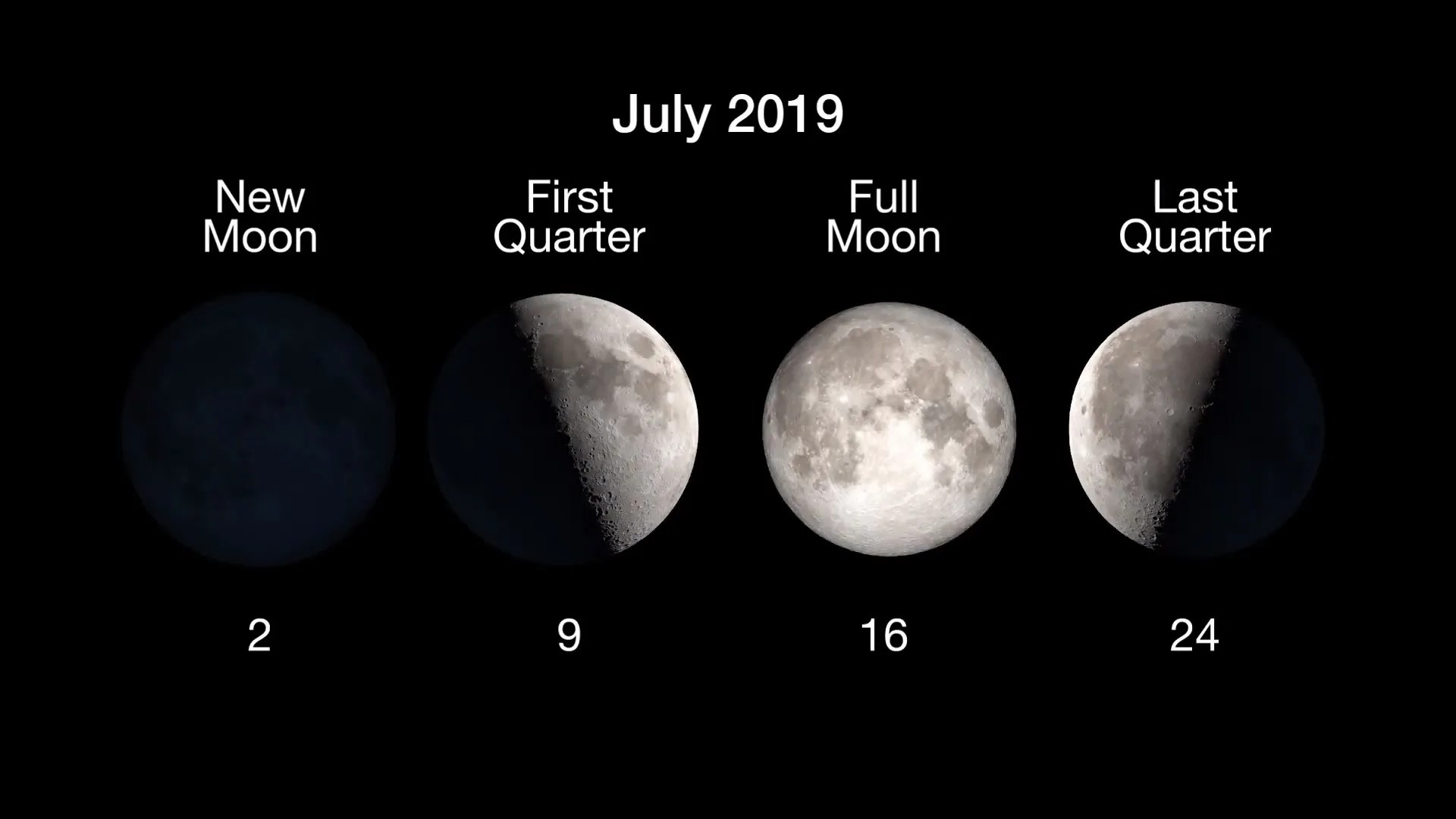
You can learn more about Apollo and NASA's future plans for the Moon at nasa.gov.
I'm Preston Dyches from NASA's Jet Propulsion Laboratory, and that's What's Up for this month.
Observing the Moon in July 2019
For those wishing to view the Moon on the date of the Apollo 11 landing anniversary, July 20, the waning gibbous Moon (just four days past full) will rise a little before 10pm local time.
More about the Moon:
About Apollo 11
The goal of Apollo 11 was to land astronauts on the Moon and return them safely home. Considered one of humanity's greatest achievements, the mission conducted the first crewed landing on the Moon, deployed instruments, took photographs, collected samples and returned the crew safely back to Earth.
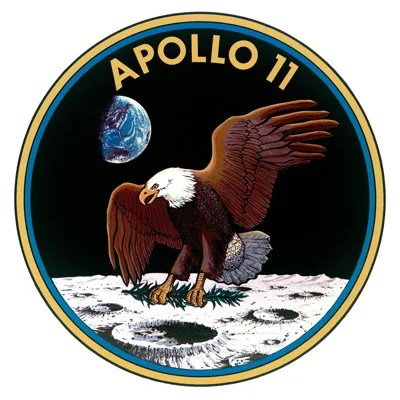
NASA's Lunar Reconnaissance Orbiter spacecraft has repeatedly imaged the Apollo landing sites, including Apollo 11. The LRO website includes neat interactive called a "flip book" that lets you smoothly slide between the different LRO images, seeing the sites at different times in the lunar day. Try it at http://www.lroc.asu.edu/featured_sites/view_site/1
More about the Apollo 11 mission:
More about the Apollo program:
More about the Apollo 50th Anniversary:
Additional Resources
Educational events and activities for the Apollo anniversary: https://spacestem.nasa.gov/
Additional astronomy & skywatching info from NASA's Night Sky Network: https://nightsky.jpl.nasa.gov
